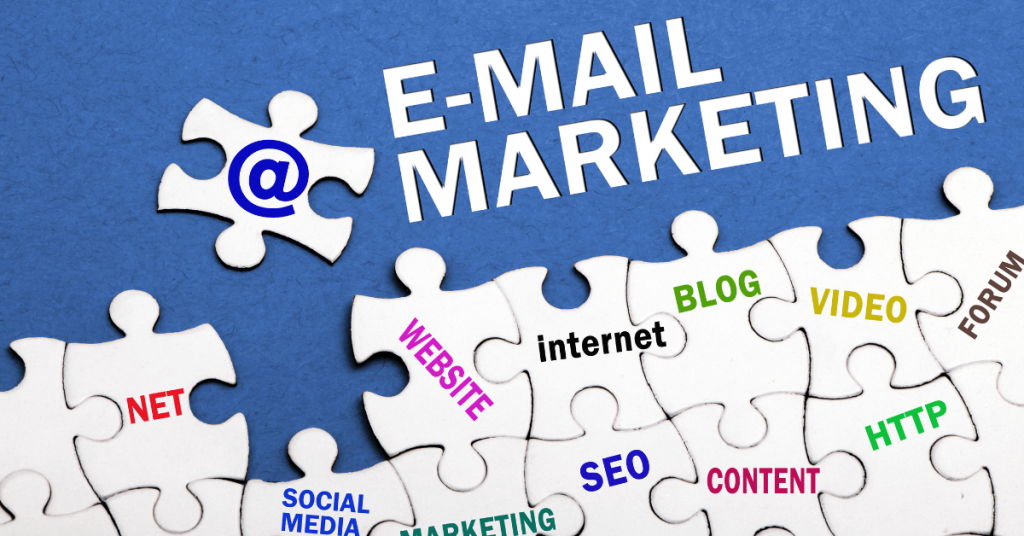In the dynamic realm of Software as a Service (SaaS), your choice of a sales strategy can serve as a compass, guiding your business toward unprecedented growth and success. The sales model you adopt not only shapes your revenue streams but also influences how customers perceive and engage with your product. This comprehensive guide explores five highly effective SaaS sales models that can drive your business toward new horizons.
What is SaaS Sales Model?
The SaaS sales model, also known as the Software as a Service sales model, is a business approach in which software applications are provided to customers on a subscription basis over the Internet. Instead of purchasing and installing software on their own hardware, customers access and use the software through a web browser. The SaaS sales model has gained popularity due to its cost-effectiveness, scalability, and ease of use.

5 SaaS Sales Models To Grow Your Business
Here are five SaaS sales models that you can consider implementing to grow your SaaS business:
1. Traditional Subscription Model
Overview
The traditional subscription model stands as a stalwart in the SaaS landscape. It’s akin to subscribing to your favorite magazine but for software. Customers pay a recurring fee at regular intervals, typically monthly or annually, to access your software platform. This model thrives on the idea of continuous value delivery to subscribers.
Advantages
- Predictable Revenue Streams: The subscription model’s hallmark advantage is its consistency. A steady inflow of subscription payments offers stability, enabling better financial planning and resource allocation.
- Strong Customer Relationships: Ongoing engagement with subscribers fosters deeper connections. This not only reduces churn rates but also establishes brand loyalty, creating a community of committed users.
- Scalability and Planning: Predictable revenue streams make scaling your business and resource planning more straightforward. You can confidently invest in product development, customer support, and marketing efforts.
Challenges
- Extended Sales Cycles: Subscribers are making a commitment, which can lead to longer sales cycles as they evaluate the value proposition and potential ROI.
- Market Saturation: The SaaS market is teeming with subscription-based offerings, making it vital for your product to stand out through innovation, exceptional user experience, and value proposition.
- Revenue Plateau: Relying solely on the subscription model might lead to a plateau in revenue growth. This emphasizes the need to complement it with other sales models or innovative approaches.
2. Freemium Model
Overview
The freemium model capitalizes on the psychology of ‘try before you buy’. It entices users with a basic version of your software that’s available for free while reserving advanced or premium features for paying customers. It’s akin to offering a taste of your product before encouraging users to indulge in the full experience.
Advantages
- Broad User Acquisition: By offering a free version, you cast a wide net, attracting a larger user base. Users are more likely to engage with your product when there’s no financial barrier.
- Value Demonstration: The freemium model is a compelling way to demonstrate the value of your product. Users get to experience its features firsthand, making it easier for them to see the benefits.
- Upselling Opportunities: Once users are engaged with your free version, strategically introducing premium features and offering an upgrade becomes a powerful upselling opportunity.
Challenges
- Feature Balancing: Striking the right balance between what’s free and what’s premium is crucial. Offering too much for free could devalue your premium features, while offering too little might not entice users to upgrade.
- User Conversion: Converting free users into paying customers requires a strategic approach. It involves understanding user needs and effectively communicating how the premium version enhances their experience.
- Monetization Uncertainty: Relying heavily on upselling could lead to unpredictable revenue streams, as they depend on user conversion rates.
3. Tiered Pricing Model
Overview
The tiered pricing model is akin to offering different versions of a product at various price points, each catering to different customer needs. It’s like a restaurant menu offering different course options to suit varying appetites.
Advantages
- Segmented Customer Approach: The tiered pricing model acknowledges that customers have diverse requirements. It allows you to tailor your offerings to different segments, addressing their specific needs.
- Upselling Potential: As customers’ needs evolve, they can easily upgrade to higher tiers, offering more features. This provides a natural pathway for increasing revenue over time.
- Higher Average Revenue Per User (ARPU): Due to the range of options, the average revenue per user tends to be higher compared to flat pricing models.
Challenges
- Complexity: The multiple tiers and associated features can be confusing for potential customers. It’s crucial to communicate the value of each tier clearly.
- Perceived Value: Careful consideration is needed to ensure that lower tiers are perceived as valuable and not lacking in features, striking a delicate balance.
- Ongoing Monitoring: Continuous monitoring of customer preferences and the performance of different tiers is essential to maintain the effectiveness of this model.
4. Usage-Based Model
Overview
The usage-based model charges customers based on how much they actually use your software. It’s a ‘pay-as-you-go’ approach that aligns costs directly with the value delivered.
Advantages
- Precise Value Pricing: Customers pay only for what they use, ensuring that costs align with the actual value they derive from the software.
- Flexibility: Ideal for customers with varying usage patterns, as they’re not tied to a fixed pricing tier that might not reflect their needs.
- Enhanced Customer Satisfaction: This model is often seen as cost-effective, as users feel they’re getting tailored value for their investment.
Challenges
- Revenue Variability: Monthly revenue can be unpredictable due to fluctuations in customer usage. This can make financial planning more challenging.
- Optimization Risk: Customers might consciously limit their usage to minimize costs, which can impact the potential revenue you can generate.
- Monitoring and Reporting: Implementing robust tracking and reporting mechanisms becomes crucial to accurately measure and bill for usage.
5. Enterprise Model
Overview
The enterprise model sets its sights on large organizations. It involves offering highly customized solutions, advanced features, and personalized pricing to meet the unique needs of enterprise clients.
Advantages
- Higher Revenue Potential: Large enterprises deal with larger budgets, potentially leading to higher revenue from each deal.
- Long-Term Partnerships: Catering to enterprise needs opens the door to forming long-lasting partnerships, offering ongoing value-added services and solutions.
- Reduced Price Sensitivity: Large enterprises often prioritize solutions that align with their unique requirements, making them less sensitive to pricing.
Challenges
- Extended Sales Cycles: Enterprise decision-making processes can be complex and lengthy, requiring patience and a strategic approach.
- Customization Demands: Enterprises often require significant customization to meet their specific needs. This can strain resources and impact scalability if not managed carefully.
- Skill-Intensive Negotiations: Skilled sales teams are a must for handling complex negotiations and customization discussions inherent to the enterprise model.
How To Choose Your SaaS Sales Model?
Choosing the right SaaS sales model is a critical decision that can have a significant impact on your business’s success. The choice should be based on various factors that align with your product, target market, and overall business strategy. Here’s a step-by-step guide to help you choose the most appropriate SaaS sales model for your product:
1. Understand Your Product:
Start by thoroughly understanding your SaaS product. Consider its features, complexity, value proposition, and the problem it solves for customers. This understanding will help you determine which sales model is best suited to deliver your product’s benefits.
2. Identify Your Target Market:
Who are your target customers? Understand their needs, preferences, and purchasing behaviors. Are they small businesses, enterprises, individuals, or specific industries? Tailor your sales model to match the preferences and buying patterns of your target audience.
3. Evaluate Pricing Strategies:
Consider different pricing strategies such as flat-rate pricing, tiered pricing, usage-based pricing, or value-based pricing. Each strategy has its advantages and disadvantages. Choose a strategy that aligns with your product’s value, your target market’s willingness to pay, and your revenue goals.
4. Assess Subscription Plans:
Determine the types of subscription plans you’ll offer. This might include different tiers with varying levels of features and capabilities. Ensure that each plan provides clear value to customers, and consider offering a free trial or a freemium version to attract potential users.
5. Consider Contract Lengths:
Decide on the contract lengths you’ll offer—monthly, annually, or longer. Longer contracts can provide more stable revenue but might require customers to commit upfront. Shorter contracts offer more flexibility for customers but may have a slightly higher churn rate.
6. Analyze Usage Metrics:
If your SaaS product’s usage can be measured (e.g., data storage, number of users, API calls), consider using usage-based pricing. This model charges customers based on their actual usage. It can be attractive to businesses with varying usage needs and allows them to scale up or down as required.
7. Research Competitors:
Analyze your competitors’ pricing models and strategies. Understanding how they position their products and the pricing structures they use can provide insights into what works in your industry. Differentiate your offering by focusing on unique value propositions.
8. Calculate Costs and Profit Margins:
Thoroughly assess your costs, including infrastructure, development, support, and marketing. Ensure that your chosen sales model allows you to cover your costs while maintaining healthy profit margins. Avoid underpricing that could lead to unsustainable operations.
9. Test and Iterate:
Once you’ve chosen a sales model, consider testing it with a small group of early customers or through a pilot program. Gather feedback, track metrics, and iterate based on the insights you gain. This iterative approach helps you refine your sales model to better suit your customers’ needs.
10. Monitor Market Trends:
The SaaS industry is continually evolving. Stay informed about market trends, emerging technologies, and changes in customer preferences. Adapt your sales model over time to remain competitive and aligned with market demands.
Overall, selecting the right SaaS sales model requires a deep understanding of your product, target audience, and market dynamics. Carefully consider different pricing strategies, subscription plans, and contract lengths to create a model that maximizes customer value while ensuring the sustainability and profitability of your business.
Conclusion – SaaS Sales Models
As the SaaS landscape continues to evolve, the choice of a SaaS sales model holds the potential to shape the trajectory of your business. Whether you opt for the stability of the traditional subscription model, the inclusivity of the freemium approach, the flexibility of tiered pricing, the precision of usage-based billing, or the potential of enterprise solutions, each model brings a unique set of advantages and challenges.
Understanding these SaaS sales models empowers you to align your sales strategy with your business goals and target audience. The SaaS journey is not a one-size-fits-all path; it’s a dynamic terrain that encourages experimentation and adaptation. By delving into the intricacies of these SaaS sales models, you equip yourself with the tools to navigate this

